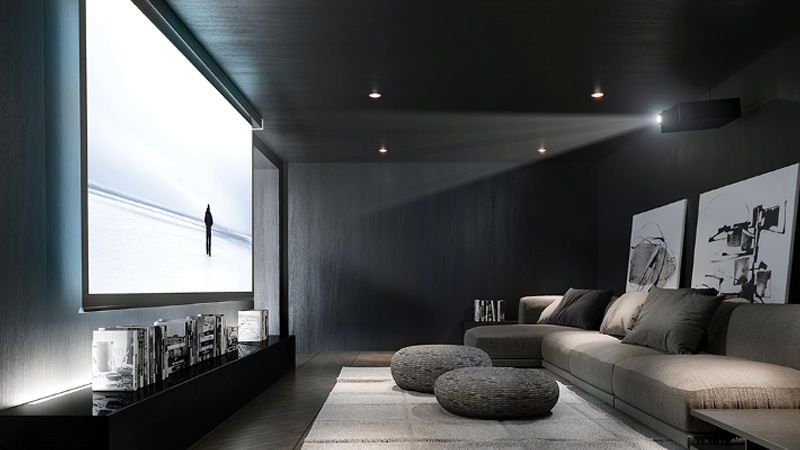LCD vs LED Monitor -Which One is Better?
Lately, choosing a tv or a monitor for your home or your workplace has been so much trouble for some. Because nowadays you have so many options to choose from that it confuses you to the core that which one deserves the best of your investment.
You will see many technical tags on the box lcd, led, uhd, oled, and qled. You will feel that you must be a technology pro to buy a simple tv, wall display, or monitor. But the most common confusion comes with led and lcd. These two might look the same, but they have significant differences in them.
Before discussing the essential differences and which one you should buy, let me tell you one thing: whichever wall display you choose mainly depends upon “how and how much you will use the display?” If you use your monitor for some basic daily tasks or are not into watching tv, you will get along perfectly fine with the default screen. Still, if you are continuously working on a laptop, it is good to invest in your computer screen.
You may also have noticed that many manufacturers use different names for the same technologies and make conflicting claims about which technology performs the best. Understandably, this can create a lot of confusion for buyers. For many people, one point of confusion is the difference between two popular display types: “LCD” (sometimes called “LED-LCD”) and “LED” (sometimes called “Direct View LED”).
Though they may sound similar, lcd and led are two distinct display technologies with their own unique features and benefits. So, what are those benefits? How do they differ? If you’re struggling to answer those questions, we’re here to help!
The question is: Should you go for a Liquid Crystal Display (lcd) or Light Emitting Diodes (led) board? Some significant differences between these two will affect your buying decision.
We can put it like, lcd is a type of led. All the lcds are leds, but not all leds are lcd. This statement might be confusing to most of you, but once we break down the specifications of these lcd and led boards, it will be easier to understand.
The question arises, what does lcd mean? It is Liquid Crystal Diodes that have a layer of liquid crystals which are embedded between two panels. Technically speaking, a liquid crystal is a substance that has the properties of both liquid and crystal. Images are created when these liquid crystals are illuminated through the fluorescent lamps behind the lcd screen.
LCD (liquid crystal display) is a flat panel display type that has been popular for years in both the video wall and consumer electronics markets. Chances are, you already use lcd technology several times a day – it’s the display type used in most smartphones, computer monitors, and television screens.
LCD panels are composed of a layer of liquid crystal sandwiched between two pieces of polarized glass. Liquid crystal is a substance that flows like a liquid but has molecules that can be oriented like crystals. When an electric current is applied to the liquid crystals, the crystals shift, allowing light to pass through to create an image.
Liquid crystals don’t produce their own light, so backlights are arranged behind the glass to illuminate the display. LEDs (light-emitting diodes) are the most common type of backlight used today, and some manufacturers market their LED-backlit LCDs as “LED-LCD.”
-
LCD Backlight:
Backlighting is an integral part of lcd. Without that, you will not be able to see anything on your screen. The lcd monitors have a dedicated amount of backlight layers that shine light over the layers to see images on the screen.
Various backlights are used in lcd, but the most common type is cold cathode fluorescent light lamps (CCFL). You will see this concept in the first few generations of lcd wall displays and monitors, and with time it is becoming less and less common.
-
Advantages of LCD:
LCDs are bright, affordable, reliable, and provide excellent visual performance. LCD is an extremely high-resolution technology, so lcd video walls can display text, images, and video in sharp detail. These advantages make lcds a great option for a range of video wall applications, from military control rooms to university research centers.
-
Disadvantages of LCD:
When leds are tied together to create a video wall, bezels (or seams) are visible between the individual panels. This can be seen as a disadvantage when comparing lcd to seamless display types like direct view led. However, manufacturers are reducing bezel-width with every new generation of displays, so you’ll find that the bezels on newer lcds are much less noticeable.
Like I have said earlier, a led tv or monitor is also a lcd monitor because it also uses a Liquid Crystal screen. The significant difference comes in the backlighting of the led display. In led boards, the backlight is composed of tinny light-emitting diodes placed together instead of cathode fluorescent light lamps (CCFL).
Like LCD, led is a flat-panel display type involving the use of light-emitting diodes (leds). However, led works very differently from lcd. In a led display, hundreds of tiny leds are mounted directly on a panel, and no liquid crystal or polarized glass is used. Instead of serving as a backlight (like they do in lcd displays), the leds in led displays produce images themselves.
Each led is essentially a tiny light bulb that emits colored light when a particular voltage is applied to it. Clusters of red, green, and blue leds are grouped on the panel, creating the full-color pixels needed to produce an image.
LED was once a lower-resolution display type used mainly in giant outdoor displays, but the development of smaller leds in recent years have made much higher resolutions possible. These recent advances have made led an exciting new option for indoor video walls.
-
LED Backlight:
To have a more energy-efficient device, using light-emitting diodes on lcd wall displays was a great move. Backlighting lcds with these light-emitting diodes gave the manufacturers more control over how they will control each pixel.
This technique gave the manufacturer a better range of colors, better response time, and a wide range of contrasts. You can get a led display panel in a wide range of colors, for example, single color or full RGB multi color, or in warm and cool whites.
-
Full-array Backlighting:
In some led display screens, the leds are spread all over the screen, known as a wide array, led setup. Each part of the led can be dimmed, and this is known as local dimming. This feature dramatically improves the image quality.
-
Edge Backlighting:
In most led displays, leds are positioned along the edge of the screen, edge lighting. These displays do not have local dimming options. Therefore, the image quality is not as good as the full array display. But edge lighting allows the manufacturer to make thin displays. These are good options when you have a tight budget.
-
Advantages of LED:
LED panels have no bezels, so they can be tiled together to form a completely seamless video wall. LED displays are also extremely bright, reliable, energy-efficient, and have the best color accuracy and refresh rates of any display type available today. These qualities make led an excellent choice for large-scale digital signage and other applications that demand high-impact visuals.
-
Disadvantages of LED:
Although prices are expected to decrease over the coming years, higher resolution led walls are currently several times more expensive than lcds, so this technology is still out of reach for most customers. In addition, even the highest resolution led displays still can’t provide the ultra-high resolutions available from lcd. For use-cases that require attention to the finest details, lcd displays may still be preferred.
-
Organic Light-Emitting Diodes (oleds):
It refers to those monitors in which each pixel has its color and light. These monitors produce an ultra-sharp and clear image with deep blacks.
-
Quantum Light Emitting Diodes (qleds):
It uses millions of quantum diodes for color filters and light, which produces a stunning image with excellent color saturation.
![]() Soft Connection – Well-organized Layout
Soft Connection – Well-organized Layout
![]() Front-end Convenient Maintenance
Front-end Convenient Maintenance
![]() Cabinet Size: 640*480mm/4:3 Ratio
Cabinet Size: 640*480mm/4:3 Ratio
![]() With 3 Years Warranty and 5% Spare Parts
With 3 Years Warranty and 5% Spare Parts
![]() Front Convenient Maintenance
Front Convenient Maintenance
![]() Hard Connection, No Need Cables
Hard Connection, No Need Cables
![]() Can Removable Back Power Supply Box
Can Removable Back Power Supply Box
![]() With 3 Years Warranty and 5% Spare Parts
With 3 Years Warranty and 5% Spare Parts
![]() 3D Billboards Best Combination
3D Billboards Best Combination
![]() Energy Saving Display 30% Design
Energy Saving Display 30% Design
![]() Ultralight Aluminum Profile Cabinet
Ultralight Aluminum Profile Cabinet
![]() Standard Size: 480×320/960*960mm
Standard Size: 480×320/960*960mm
To decide this, we will evaluate both the technologies from their specifications. Here is a comparison of these technologies.
-
Energy Efficiency:
LEDs screen wall is more energy efficient as compared to lcds because CCFLs are replaced with leds. Therefore, led monitors are preferred over lcd monitors. A 32” led display consumes 0 watts lesser energy as compared to the same size lcd. This power consumption difference increases with the increased difference in size.
-
Viewing Angle:
When we talk about direct view leds display panel or full array leds, the viewing angle is better than lcds because the light source is spread evenly on the screen. But edge-light leds have a drawback in this contrast when we compare them with lcds. This is because of the position of the light source in the led screen.
-
Picture Quality:
Due to modular leds, a led display makes a better-quality image. leds also provide rgb color contests that are genuinely white and true black colors of the picture, leds have a shorter response time as compared to lcds. Both factors contribute significantly to producing a higher image quality. Outdoor led screens are very much in use for advertisement purposes.
-
Size:
Light-emitting diodes are considerably smaller than fluorescent bulbs. These bulbs have a considerable thickness, while as compared to these, the thickness of light-emitting diodes is next to none.
Another factor is that many diodes are assembled at the same screen, so the number of diodes attached does not affect the thickness of the led. Therefore, leds are thinner than lcds. We can say it like this; a led display can be ⅓ of the thickness of the same sized lcd display.
-
Weight:
Because lcds are considerably thicker than leds, they weigh more than leds. An led off the same size as a lcd will weigh almost half of that lcd.
-
Response Time:
Response time is the time a display takes to shift from one color to another color. RT is generally measured in milliseconds (ms). The image quality is calculated as the shorter the response time, the higher will be the image quality. Generally, led displays to have a better response time than lcd displays.
-
Contrast:
LED displays offer better contrast than lcds because leds use a full-array backlight rather than one powerful backlight. Plus, the led backlight has the entire rgb spectrum, which provides a more profound rgb contrast. But lcd backlight only shows black and white color contrast.
-
Lifespan:
LED displays have a longer lifespan of approximately 100,000 hours compared to the lifespan of lcd, which is 50,000 hours.
-
Effect On Eyes:
The led wall screens have a better viewing angle. Other than this, it has the option of dimming the backlight and other related features. This is the reason that leds are better for your eyes than lcds.
-
Maintenance:
The maintenance of leds is easier and cheaper than lcd. Because in a led display, when a diode is damaged, you will only need to replace that diode, but in the case of lcd, you will need to replace the whole bulb.
-
Cost:
Briefly, led might look like an expensive option for you. But this is only the purchase price of the led. If you look at the other factors like lifespan, durability, energy efficiency, then you will find that leds are a cheaper option than lcds.
6. Bottom Line
Unless budget is not your concern, I don’t see why you should not opt for a led monitor over a lcd monitor. They are better than lcds in every feature like we have discussed above. lcd vs. led display race and led wall displays to win the race.
In this new era of the minimalist approach, you will save a lot of space because of the thin sizing of a led monitor. In future, people are moving more towards light emitting diode technology.
Contact
 Building D, Hongfa Science Park,
Building D, Hongfa Science Park,
2035 Songbai Road, Shiyan, Bao’an District, Shenzhen, Guangdong, China.












